Lourmarin attractions
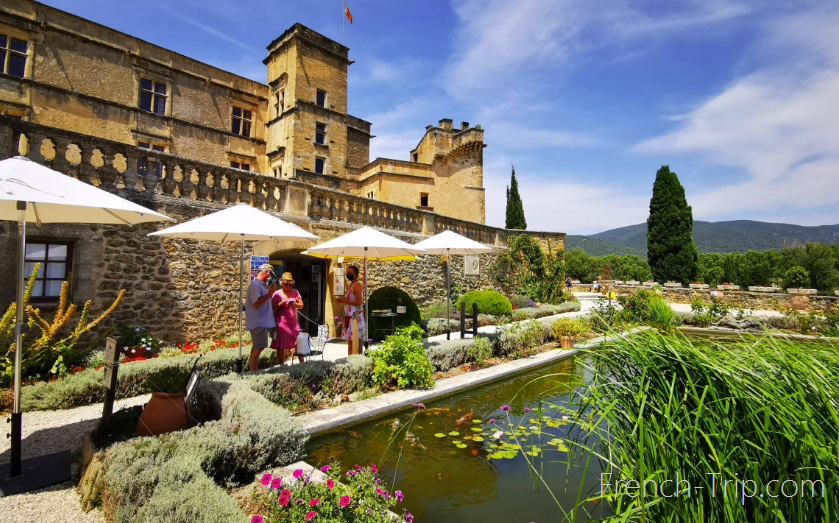
Lourmarin, a picturesque village nestled in the heart of the Luberon region in Provence, France, offers a captivating blend of natural beauty and rich historical heritage. At the heart of this charming village stands the exquisite Château de Lourmarin, a testament to its medieval and Renaissance history. Visitors can explore the well-preserved streets of Lourmarin, lined with colorful Provençal houses, and immerse themselves in the village’s vibrant cultural scene.
Lourmarin has long been a haven for artists and writers, including the renowned Albert Camus, who found inspiration in its serene surroundings. The village also hosts lively markets, where you can sample local produce and immerse yourself in the regional flavors.
With its captivating history, stunning landscapes, and cultural allure, Lourmarin is a must-visit destination for those seeking the quintessential Provençal experience.

Lourmarin attractions
At the top of the village there is a magnificent:
Château de Lourmarin
The Château de Lourmarin, the main Lourmarin attraction, was constructed in the 15th century, although it underwent several renovations and expansions afterward. The current structure is primarily in the Renaissance style.
The castle consists of two parts, distinct in their periods but adjacent to each other: the old castle, part of a medieval fortress dating back to the 12th century, and the new castle, built in Renaissance style in the 15th century. The new castle was constructed by the Agoult family, who resided there for three centuries.
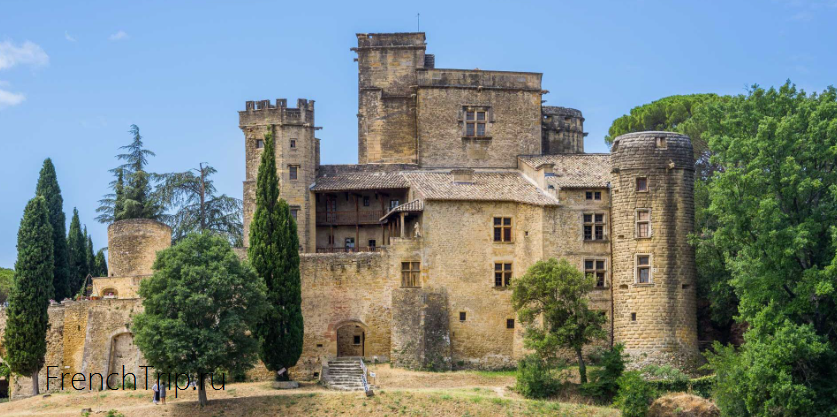
Over time, the castle was abandoned and fell into disrepair. The decaying castle was purchased by an industrialist from Lyon, Robert-Laurent-Vibert, who undertook its restoration.
Following his accidental death in 1925, the castle became the property of the Academy of Arts and Literature of Aix-en-Provence. They established the “Fondation de Lourmarin Laurent-Vibert,” which transformed the castle into the “Villa Medicis de Provence.”
The castle was listed as a historical monument in 1948.
The History of Lourmarin Castle
In the 15th century, Fulk d’Agut reconstructed the castle on the remnants of a 12th-century fortress. The castle underwent several transformations and expansions. Notably, in 1526, Louis d’Agul-Montoban and his wife Blanche de Levi-Ventadour added a Renaissance-style wing. By the late 16th century, the property came under the ownership of the Créqui-Lesdiguières family, who also owned the nearby La Tour d’Äigues until 1789. The castle was occupied by estate managers during this period.
Following the French Revolution, the castle changed hands multiple times and eventually fell into ruin. In 1920, when it was set to be auctioned for stone removal, it was repurchased by Robert Laurent-Vibert, an industrialist from Lyon, who embarked on its restoration. After his accidental death in 1925, Henri Pacon took over the castle’s restoration efforts. He bequeathed it to the Academy of Sciences, Agriculture, Arts, and Elegant Literature of Aix-en-Provence, which established the Fondation de Lourmarin Laurent-Vibert, transforming the castle into the “Villa Medicis de Provence.”
The castle was listed as a historical monument in 1948.
Graffiti at Lourmarin Castle
A picturesque legend surrounds graffiti carved into the walls of a room in the western tower of the new castle (this room, unfortunately, is not accessible to visitors). According to local tradition, the drawings manifest a curse placed by Romani people on the castle during 1920-1921. The graffiti depicts a boat occupied by eight figures, a large Christian cross on the left, and numerous symbols and names. Indeed, the comparison between these images and a boat that brought Saint Mary from Palestine to the shores of Camargue in Catholicism seems straightforward — an event significant in Romani culture.

However, recent research has cast doubt on this esoteric interpretation and the dating of the graffiti. There is no female character on the boat. The featured attributes reflect the fashion during the reigns of Henry III and Henry IV, and the practice of inscribing various names everywhere is characteristic of the late 16th century. Some of the names also belong to Protestants who settled in Lourmarin between 1569 and 1640. During the religious wars, the castle was in a semi-abandoned state and may have served as a squat or a place of confinement. The apparent poses of distress of the people in the boat and the dominant position of Golgotha or the crossroads rather resemble a maritime ex-voto created in this ancient period.
Visiting Lourmarin Castle:
- Opening Hours:
- Lourmarin Castle is open to visitors every day, except on December 25 and January 1, with an annual closure from January 6 to 17, 2020.
- May – June – July – August – September: 10:30 AM to 6:45 PM
- November – December – January – February – March: 10:30 AM to 12:45 PM * and 2:30 PM to 5:15 PM
- April and October: 10:30 AM to 1:15 PM * and 2:30 PM to 5:45 PM *
- Ticket counter closes 45 minutes before closing time.
- Tickets (as of 2021):
- Adults – €7.50
- Children aged 6 – 16 – €6.00
- Children under 6 – Free
- With Vaucluse Provence Pass – Free
- Website
La Corrée Castle
This private castle was built in the 17th century, along with a park featuring pools and fountains. It underwent subsequent renovations and expansions. The grand hall boasts beautiful neo-baroque-style frescoes.
Other Lourmarin attractions include also religious heritage:
Saint-André et Saint-Trophime Church
The Saint-André et Saint-Trophime Church, dating back to the 12th century, is open solely for Saturday night masses (please inquire about the schedule at the Tourist Office). This church in Lourmarin falls under the jurisdiction of the diocese of Avignon, though its complete historical background remains somewhat enigmatic.
Initially, a chapel was constructed in the 12th century for the village’s early inhabitants. Subsequently, in the 16th century, the Agoult family affiliated with the church, contributing an exquisite vault featuring ivy and tiercerons. Lourmarin witnessed destruction during the religious turmoil between Protestants and Catholics, following the conversion of the Vaudois to Protestantism.
The present church, built in the Gothic style, holds the status of a classified historical monument.
- Place de l’Eglise
Protestant Temple
The Protestant Temple was built on April 17, 1806, following the plans of Michel-Robert Pensho. The construction was funded by the municipality of Lourmarin. The church has a rectangular shape, measuring 12 meters in length and 6 meters in width at its base. A double-flight staircase leads to the pulpit located in the apse of the building. The church was inaugurated in 1818 after twelve years of construction.
The organ, crafted by Augustin Zeiger, was installed in the building in 1844. The bell tower was constructed in 1849, and the bell dates back to the same year.
The church has been listed as a historical monument since May 10, 1991.
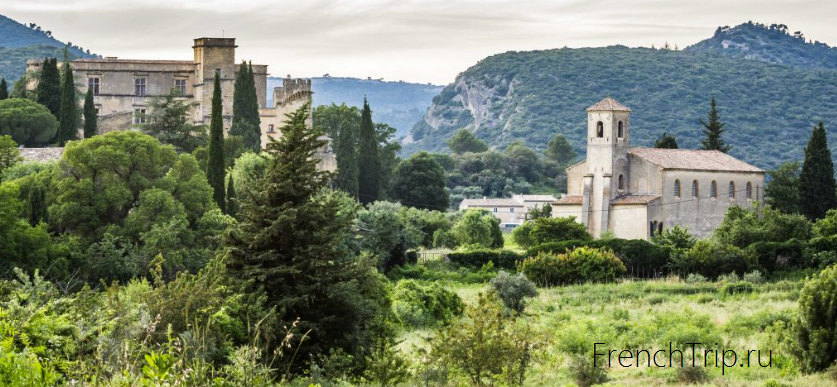
Bell Tower (Beffroi de Lourmarin)
The belfry, affectionately nicknamed “La Boîte à sel” (The Salt Box) in Lourmarin due to its shape, was built on the site of an old motte castle 11th-century. The entirety of this site was classified as a historical monument in 1942.
- Place du Castellas
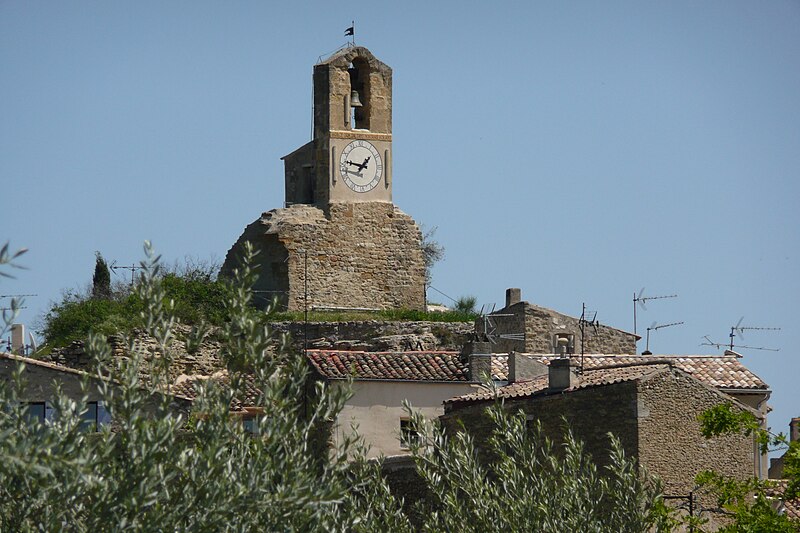
Historic Houses of Lourmarin
Most of the houses comprising the historic center of Lourmarin were built in the 18th century.
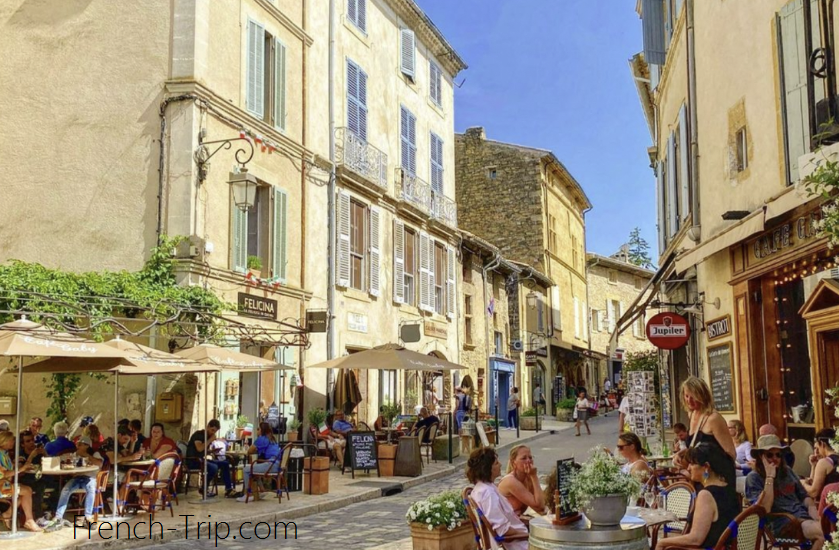
Lourmarin Cemetery
Lourmarin’s cemetery is the resting place of the famous writer and philosopher Albert Camus, writer Henri Bosco, and other notable individuals.
Albert Camus (1913 – 1960)
Albert Camus, the renowned French philosopher, author, and Nobel laureate in literature, had a deep connection with Lourmarin. He spent the last years of his life in this picturesque village in the Luberon region of Provence. Camus was drawn to Lourmarin for its tranquility, natural beauty, and the serenity it offered, which provided him with the ideal environment for his work and reflection.

In 1958, Albert Camus acquired a house in Lourmarin, where he lived with his family. The house is known as “Le Clos,” and it’s a place where Camus found inspiration and solace in the midst of nature. He continued to write and work on his literary projects while residing in Lourmarin.
Camus’s presence in Lourmarin left an indelible mark on the village, and his legacy is commemorated through various tributes and activities. Visitors can explore “Camus Street” in Lourmarin, where the author’s house is located. The village’s tourist office also offers a literary walk called “In the Footsteps of Albert Camus,” which takes you to places of significance associated with the author.
Tragically, Albert Camus’s life was cut short in 1960 when he died in a car accident near Sens, France. However, his memory and influence endure in Lourmarin, where admirers of his work can gain insight into his life and creative process. The village remains a place of pilgrimage for literature enthusiasts seeking to connect with the spirit of this iconic writer.

Henri Bosco (1888 – 1976)
Henri Bosco, a prominent French writer, also had a significant connection to Lourmarin. He was drawn to the village for its serene and inspiring surroundings, which played a pivotal role in his literary career. Henri Bosco was known for his poetic and evocative prose, often inspired by the natural beauty of the Luberon region.
Bosco’s work is deeply rooted in the landscapes and culture of Provence, and his writing reflects his love for the region. He found Lourmarin to be an ideal place for his creative endeavors, allowing him to explore the themes of nature, spirituality, and human existence in his novels and essays. He wrote:
“This region found its way into my soul.”
One of Henri Bosco’s most famous works is “L’Enfant et la Rivière” (The Child and the River), which is set in the Luberon and draws inspiration from the local landscapes and traditions. The book’s vivid descriptions of the region’s natural beauty and the relationship between man and nature have made it a celebrated piece of literature.
Similar to Camus, Bosco is buried in the town’s cemetery. The Lourmarin Tourist Office offers the “In the Footsteps of Henri Bosco” literary promenade, which includes visits to his favorite places described in his books.
→ Back to Lourmarin travel guide
Archives
Calendar
| M | T | W | T | F | S | S |
|---|---|---|---|---|---|---|
| 1 | 2 | 3 | 4 | 5 | 6 | 7 |
| 8 | 9 | 10 | 11 | 12 | 13 | 14 |
| 15 | 16 | 17 | 18 | 19 | 20 | 21 |
| 22 | 23 | 24 | 25 | 26 | 27 | 28 |
| 29 | 30 | 31 | ||||

